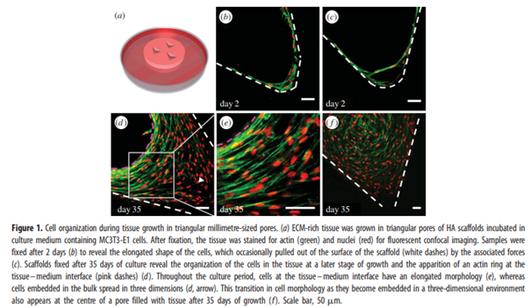Gradual conversion of cellular stress patterns into pre-stressed matrix architecture during in vitro tissue growth
Abstract
The complex arrangement of the extracellular matrix (ECM) produced by cells during tissue growth, healing and remodelling is fundamental to tissue function. In connective tissues, it is still unclear how both cells and the ECM become and remain organized over length scales much larger than the distance between neighbouring cells. While cytoskeletal forces are essential for assembly and organization of the early ECM, how these processes lead to a highly organized ECM in tissues such as osteoid is not clear. To clarify the role of cellular tension for the development of these ordered fibril architectures, we used an in vitro model system, where pre-osteoblastic cells produced ECM-rich tissue inside channels with millimetre-sized triangular cross sections in ceramic scaffolds. Our results suggest a mechanical handshake between actively contracting cells and ECM fibrils: the build-up of a long-range organization of cells and the ECM enables a gradual conversion of cell-generated tension to pre-straining the ECM fibrils, which reduces the work cells have to generate to keep mature tissue under tension.






